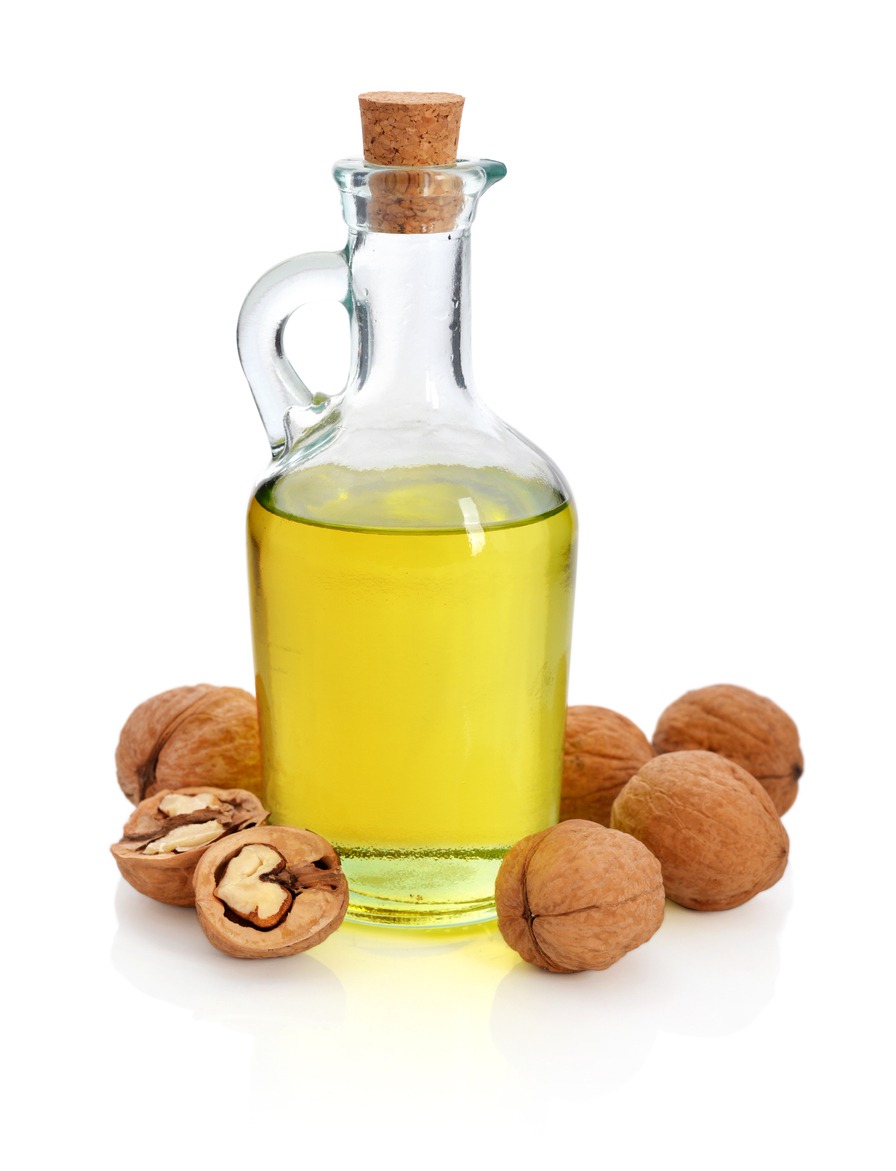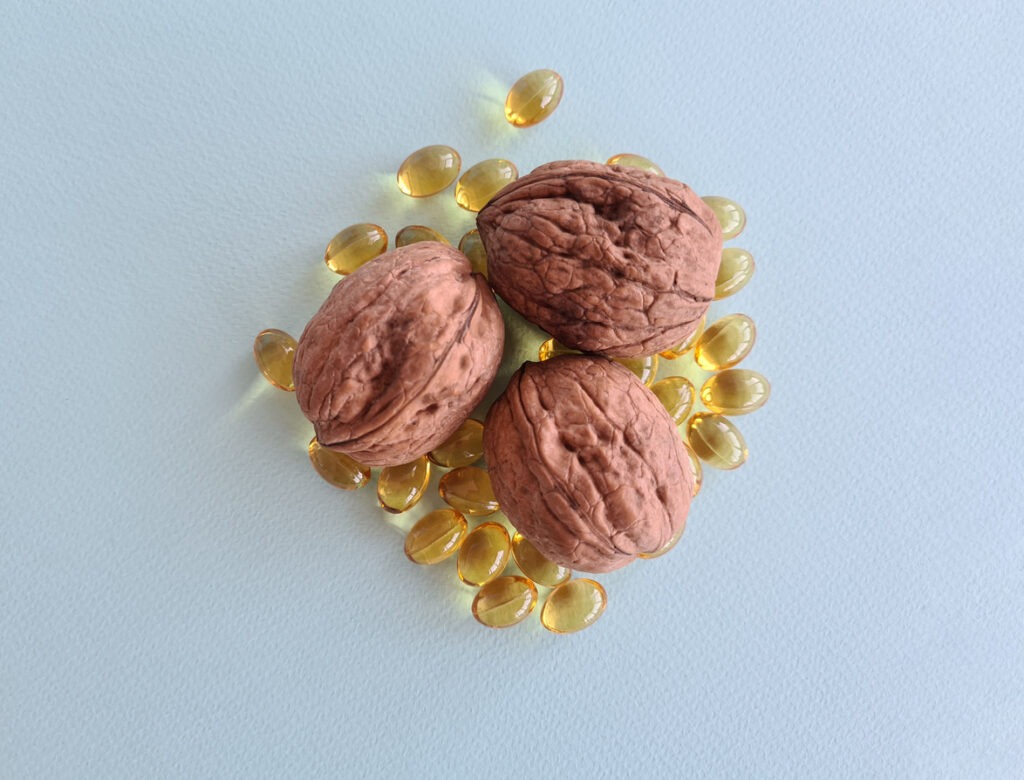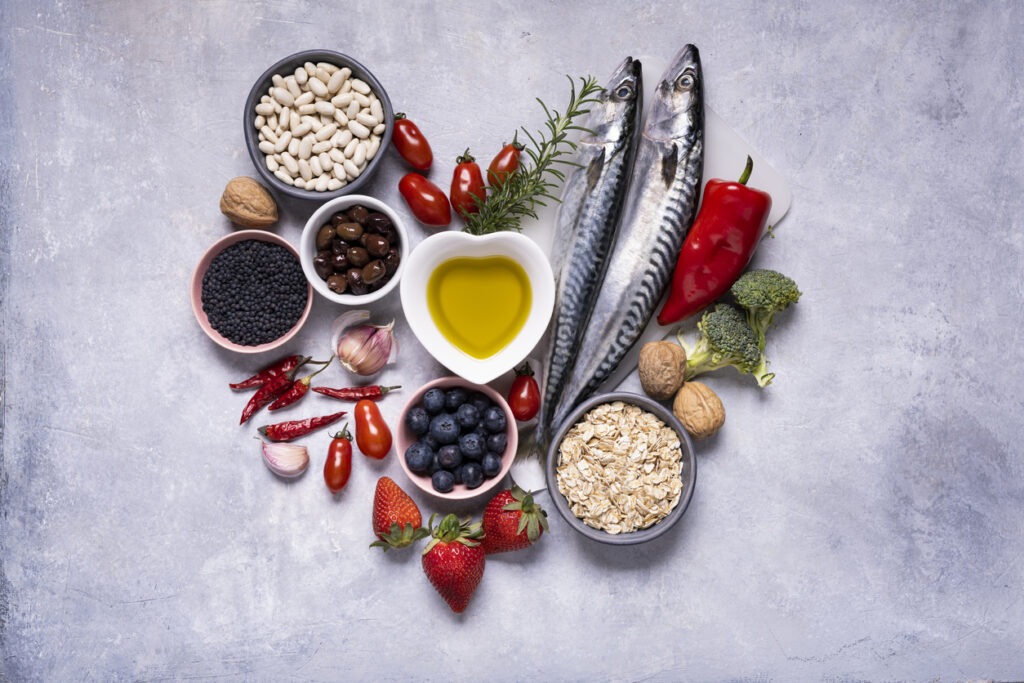The health benefits of walnut oil go far beyond its delicious flavor.
It is prepared from dried walnuts. Walnut kernels with a fat content of more than 60% are used to make the oil and can be extracted using a variety of techniques, and has a delicate nutty flavor and aroma.
It is not advised to be used in high heat cooking because it has a light consistency and a low smoke point of 320 degrees Fahrenheit. It develops a bitter taste when cooked at high temperatures.
It works well as an ingredient in pasta, vegetables, salad, and desserts. Due to how quickly it spoils, it should be kept in cool, dry and dark cabinet. You don’t need to refrigerate the oil, but doing so will cause it to harden and become hazy. Both of these effects go away once the oil reaches room temperature, but you’ll have to wait until that happens unless the ambient temperature is quite high.
Walnut Oil’s Health Benefits
Walnut oil is polyunsaturated. It is so adaptable that it can be used both topically and orally. It works nicely with salads despite the fact that it cannot be used in high heat cooking due to its low smoke point. While everyone is enjoying its nutty flavor and light texture, let us learn about the incredible health advantages of this nutritive miracle oil.
It stimulates immunological function1. Antioxidants, ellagic acid, fatty acids, and vitamins included in walnut oil support a strong immune system and ward off disease.
It improves blood vessel activity2. Walnut oil contains a rich amount of alpha linolenic acid, which helps maintain the arteries clear and healthy and can cut harmful cholesterol. Selenium levels in walnut oil are similarly high. This antioxidant helps to maintain a healthy thyroid function and may lower your risk of cancer, heart disease, and cognitive decline3.
It is rich in antioxidants4. Unsaturated fatty acids, ellagitannins, catechin, melatonin, and other polyphenolic chemicals that function as antioxidants are all abundant in walnut oil.
It serves as an infection remedy. In order to combat infections, walnut oil has anti-fungal, anti-inflammatory, anti-parasitic, and anti-microbial effects5. It is well known for treating parasitic worms in people and animals, as well as bacteria that cause acne, fungal infections, rashes, cankers, warts, and other illnesses of the skin, scalp, or stomach.
It lessens inflammation6. Polyunsaturated fats, which are abundant in walnut oil and have anti-inflammatory properties, provide several health benefits. For swollen and painful joints and muscles, it can be taken orally or used topically.
It encourages hair growth7. The fatty acids and antioxidants in walnut oil aid to strengthen your follicles so they can produce healthier, stronger, and fuller hair growth while also reviving inactive hair follicles.
It improves skin health8. Walnut oil is good for the skin because of its significant vitamin E content as well as its antioxidant and anti-inflammatory properties. These attributes are well known for postponing the onset of aging symptoms, avoiding wrinkles and fine lines, moisturizing the skin, and improving skin brightness.
Walnut Oil Products
1. Expeller Pressed
In an expeller press, oil is extracted by pressing walnuts through a cavity under great pressure and friction. The seeds are squeezed using friction rather than heat throughout this procedure, and since the oil is expeller pressed, a lot of walnuts are needed to get a high output.
2. Cold Pressed
Traditional methods for obtaining oil from raw walnuts include cold pressing. The nuts are crushed in this process at room temperature. Cold-pressed oils are less heat-tolerant and have a nutty flavor.
3. Virgin
Virgin walnut oil is created by pressing roasted walnuts and was created entirely mechanically, without any chemical processing.
4. Pure
Pure walnut oil is made from pressed, raw, all-natural walnuts. It is offered in both refined and unrefined forms.
5. Unrefined
Walnut oil that has not been refined should not be heated and has not undergone post-extraction bleaching. It can be used as baking oil or finishing oil.
6. Carrier Oil/Base Oil (Cosmetic Grade)
Walnut carrier oil can be used as a moisturizer by applying it directly to the skin. Additionally, it is added to cosmetics and used to dilute concentrated essential oils.
Delish Foods Prepared with Walnut Oil
Let’s learn how to use walnut oil now that we are aware of its nutritional advantages. Here are some meals you can prepare at home for various gatherings with family and friends.
1. Creamy Lentils and Pasta with Buttermilk and Walnut Oil
Ingredients:
- 3 1/2 cups water
- 1 scallion chopped
- 1 bay leaf
- 1 small carrot
- 1 celery rib
- 1 small onion
- 2 cloves garlic
- Pinch dried thyme
- 1/2 cup cooked pasta
- 1/2 cup buttermilk
- 1 1/2 tbsp. balsamic vinegar
- 4 tbsp. walnut oil
- 1/2 cup toasted walnuts
- 1 cup lentils
- 1/2 cup parsley leaves
- Salt and pepper to taste
Direction:
In a medium saucepan, combine the lentils, diced veggies, spices, and water. Bring to a boil. Reduce heat to low, cover, and simmer for 45 minutes. Drain the mixture into a colander once the lentils are cooked. Combine the buttermilk, balsamic vinegar, and walnut oil. Gently incorporate the pasta, walnuts, parsley, scallions, and the wet mixture with the lentils. If necessary, season to taste and add additional salt, pepper, or vinegar. Add the remaining veggies and nuts, and drizzle the walnut oil on top.
2. Charbroiled Butternut Squash
Ingredients:
- 1 large butternut squash, sliced widthwise
- 2 tbsp. walnut oil
- Salt to taste
Direction:
Set the oven to 425 F. Use parchment paper to line a sizable baking sheet, then drizzle one tablespoon of oil over it. Add the butternut slices. Season generously and bake for 15 to 20 minutes. Flip, salt lightly, and bake for an additional 15 minutes. Boost the temperature to broil. After about 5 minutes under the broiler, the squash should be dark brown and caramelized in spots. The rings might cook more quickly than the other slices; if so, take them out sooner.
3. Kale and Walnut Pesto
Ingredients:
- 4 cups kale
- ½ cup toasted walnuts
- 4 tbsp. parmesan cheese, shredded
- 1 tbsp. water
- 5 tbsp walnut oil
- Salt to taste
Direction:
On the burner, lightly toast walnuts until they are toasted. Place aside and let cool. Add all ingredients to a food processor, and process until thoroughly blended and essentially smooth. Taste and season as necessary. Add to pasta, quinoa, or roasted or steamed vegetables.
4. Molida
Ingredients:
- 7 pcs. wheat bread
- Walnut oil
- Yogurt
- Salt to taste
Direction:
With your hands, break up the wheat bread into little pieces and place it in a container. Heat the yogurt in a separate container, then add the chunks of wheat bread and cook them in the hot yogurt. Salt to taste and drizzle with walnut oil.
5. Black Rice with Hazel Nuts
Ingredients:
- Black rice
- Walnut Oil
- Water
- Hazel nuts, toasted
- Salt and pepper to taste
Direction:
In a medium saucepan, combine rice, a dash of salt, and 134 cups of water. Over high heat, bring to a boil. Cook rice, covered, for 30 to 35 minutes or until it reaches the desired tenderness. Drain off excess water. Add salt and pepper, combine rice and walnut oil, and toss in the chopped hazelnuts.
Conclusion
Polyunsaturated fatty acids are prevalent in walnut oil. Oils with a high content of polyunsaturated fats are prone to oxidation both in storage and while being consumed.
You should keep a close eye on your oil because they can go rancid. You should test them and be familiar with the unique characteristics of this oil.
Reference
1 https://www.healthline.com/nutrition/benefits-of-walnuts#TOC_TITLE_HDR_3
2 https://www.healthline.com/nutrition/walnut-oil#:~:text=One%20study%20in%2015%20adults,lower%20blood%20pressure%20(%2014%20).
3 https://www.webmd.com/diet/walnut-oil-health-benefits#:~:text=Walnut%20oil%20is%20also%20high,%2C%20heart%20disease%2C%20and%20cancer.
4 https://www.healthline.com/nutrition/benefits-of-walnuts
5 black walnuts, https://www.ncbi.nlm.nih.gov/pmc/articles/PMC6316014/
6 https://www.health.harvard.edu/blog/health-benefits-of-walnuts-2018081314526
7 https://www.bebeautiful.in/all-things-skin/everyday/walnut-benefits-for-skin-and-hair
8 https://www.webmd.com/diet/walnut-oil-health-benefits#:~:text=Studies%20show%20that%20your%20body,and%20even%20some%20skin%20cancers.


